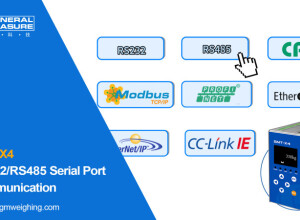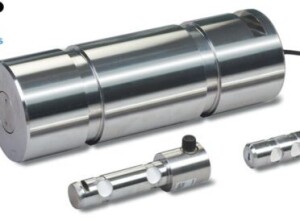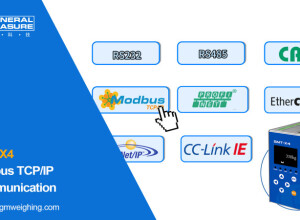Weightru (United Kingdom) - If you are in the market for a weighbridge, there are a number of factors you need to consider before making your purchase.
A weighbridge is a long-term investment that demands careful research before making a final purchase decision.
Cost is always an issue, but only choosing on price will almost certainly result in difficulties later on.
Not all weighbridges are created equal, and it is important to find one that meets your specific needs.
So what are the key factors that should be considered?
In this blog post, we will discuss the top 12 factors to consider before buying a weighbridge.
1. Choice of Weighbridge:
Choosing the number, type, size, and capacity of your weighbridge(s) is an important stage in the process.
So, getting expert advice from the start may help you avoid expensive modifications or upgrades in the future.
2. Manufacturing Pedigree:
Reputable weighbridge suppliers should be able to show evidence of the quality of the key components and materials used in their weighbridges, as well as a documented and organized manufacturing process.
For a growing number of initiatives, weighbridges must be CE certified to demonstrate that they meet the most recent EN1090 standards for constructional steel; this includes the steel’s traceability and quality, as well as in-house welding competence.
3. Key Component Manufacturer:
The quality of the key elements of the measuring chain, such as weighing equipment and software, has a major influence on weighbridge performance and long-term dependability, including the all-important load cells, junction boxes and instrumentation.
There are several advantages if these items are created and manufactured by a single firm.
Stainless steel canister load cells, when coupled with well-designed mounting hardware, provide the greatest long-term solution, according to research.
Load cells must possess the tightest IP69K international classifications for optimum environmental sealing and instrumentation must be durable.
4. Single Source Responsibility:
There are several advantages to ‘single-source’ supply for all of the crucial weighbridge components, including software, that offset potential risks and work together to provide optimum performance and reliability.
However, many modern weighbridges are more complex, incorporating a variety of peripheral equipment such as traffic controls, vehicle identification systems, driver-operated terminals, and radiation detection systems.
The seamless and effective integration of all these by a single supplier is very advantageous — and if there’s an issue, there’s only one place to go.
5. Weighbridge Service & Support:
Weighbridges are designed to operate in some of the most severe situations and harshest environments on a daily basis.
Hence why it is so important that they must be serviced and maintained on a regular basis.
That said, suppliers may now provide comprehensive nationwide service and support, thanks to trained and certified engineers who can maintain your weighbridge system running effectively and accurately.
As such, setting up a documented service agreement from the start will give comprehensive coverage for all critical weighbridge components and software.
6. Weighbridge Software:
This is one of the most significant features of a weighbridge system, and if it isn’t properly specified in a Functional Design Specification (FDS) document, it might be a weak link.
Not only does weighing software need to manage the entire weighing procedure and data capture, but it should also integrate with well-known management systems like SAP, Sage, and Navision.
Moreover, the control system must provide an interface between the operator and the weighbridge system. It should be simple to use, rugged and have the ability to integrate with other systems.
The control system must also be able to provide a printout of the weighing transaction, which is then given to the truck driver as proof of the weight and transaction.
7. Future Proof Designs:
Even when a weighbridge system is well planned and designed, there may be operational modifications that need to be made at some time in the future.
Working with a reputable supplier who designs and creates key components as well as writing the software will guarantee that any instrumentation or software upgrades can be carried out without redundancy.
8. Calibration:
Inaccurate weighbridges are prohibited by law and might result in a loss of income or damaged customer relationships.
Due to this, weighbridges must be calibrated on a regular basis. Plus if key components are replaced, re-verification is required. Weighbridges must be weighed every day to ensure they are functioning properly.
By working with a company that is certified for the self-verification of weighbridges and uses its own test weight vehicles, you can rest assured that your weighbridge calibration will be re-verified promptly and correctly, minimising any downtime.
9. Cost of Ownership:
Perhaps an over-used or even outdated term, but it is still very relevant when it comes to weighbridges.
Sometimes, the initial low cost of a weighbridge solution can soon become an expensive problem in terms of downtime, unwanted repairs and replacement.
Before making a selection on which weighbridge system to acquire, potential customers should think about all of the necessary aspects and seek professional advice.
10. Third Party References:
Third-party testimonials from previous customers provide strong evidence of a weighbridge provider’s abilities.
Furthermore, look for references from other industries as this will give you a better understanding of the supplier’s experience and expertise in different market sectors.
11. Weighing Accuracy:
One of the most important aspects to consider when purchasing a weighbridge is its accuracy.
The desired level of accuracy will be dictated by the type of weighing application and what degree of certainty is needed for legal or commercial purposes.
If a weighbridge doesn’t have adequate levels of accuracy, it might result in revenue losses. For example, if a truck is carrying 30 tons but the weighbridge only records 29 tons, then the company is losing money on every truck that passes through.
12. Installation & Commissioning:
A professional installation will ensure that your weighbridge is properly aligned and level, thus providing accurate readings.
Furthermore, it’s important that commissioning is carried out by qualified personnel in order for the system to function correctly and efficiently.
Rounding Up:
When it comes to choosing a weighbridge, there are many factors to consider in order to ensure that you make the best decision for your business.
By taking into account all of the above factors, you can be sure that you’ll find the perfect solution for your needs.
























Interested? Submit your enquiry using the form below:
Only available for registered users. Sign In to your account or register here.